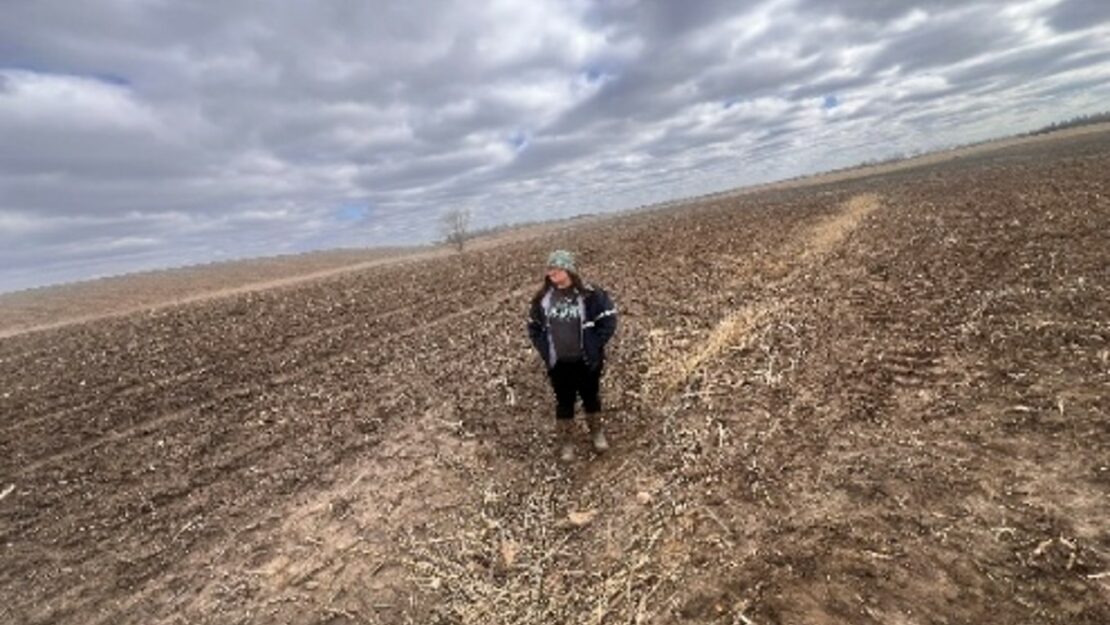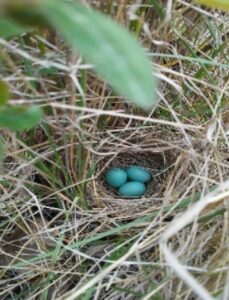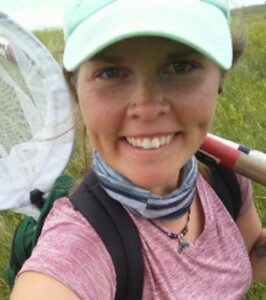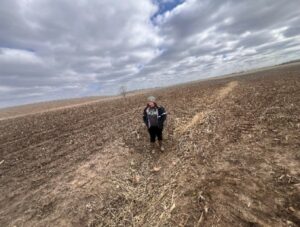Uncovering Conservation Careers: SWCD Program Technician

By Adriene Matthews, Agriculture and Outreach Specialist Individual Placement Member / AmeriCorps Member placed at Cottonwood SWCD.
There are several different types of jobs in conservation in America. Wildlife and marine biologists, wildlife technicians, environmental scientists, and foresters, just to name a few. This article will highlight the jobs in conservation that may be overlooked, or people have never heard of before, me included. This is the first article in a series that will touch on the variety of jobs in conservation that I work closely with in Minnesota.
Hi, my name is Adriene Matthews, and I am an agriculture outreach specialist for Conservation Corp Minnesota & Iowa in the town of Windom, in Southwest Minnesota. I have had the wonderful opportunity to work alongside so many different organizations and agencies, from Minnesota Pollution Control Agency (MPCA), Department of Natural Resources (DNR), Natural Resources Conservation Service (NRCS), Soil and Water Conservation Districts (SWCD), and Minnesota Department of Agriculture (MDA). I was able to learn about all the different ways these organizations are helping with conservation of land, air and water, in Minnesota.

Breanna Wagner is a self-named ‘Bird Nerd’ that I have gotten to know very well while working at the Cottonwood Soil and Water Conservation District. She is one of the four program technicians in this office and has a very interesting story about how she was brought here all the way from Hutchinson, MN.
From a young age Breanna had a very strong tie to the outdoors, all thanks to her closely involved Girl Scout troop leader. Breanna’s troop leader would take them on camping trips, day camps, hiking, and tenting! While Girl Scouts are great at selling cookies, they are also able to go camping at state parks, restock their local food pantry, and earn different badges to show how they are able to support their communities. Growing up Breanna recalled watching a plethora of birds visiting her grandma’s bird feeder and she loved to watch the blue jays, cardinals, and American goldfinch come visit her. After high school, Breanna went to Bemidji state, and majored in their Wildlife Biology program. One of her professors who taught Ornithology, the study of birds, helped to show Breanna what wildlife she wanted to work with, after graduation.

Breanna was able to work with different agencies to research birds in Minnesota, North Dakota and Kansas. After feeling homesick and looking for a job closer to home, she got a job offer at Cottonwood SWCD, as a program technician, where she’ll primarily be working with farmers, landowners, and other people in Cottonwood County. While her original plan was to work in Ornithology, Breanna believes that the work she is doing now plays an essential role in conservation. She has helped landowners create pollinator gardens to better encourage native pollinators to return, replaced grove trees and windbreaks with native trees, and helped with shore restorations to prevent water quality degradation. When asked how the SWCD plays a part in environmental conservation, Breanna stated ‘Life starts in the soil. If that resource is tainted, then it can’t provide to its full potential. Soil is needed to grow, and water is needed to survive.’
Breanna recently taught elementary and middle school students about native pollinators and the importance of water. She informed me that it is reported 3.5 billion people could experience water scarcity by 2025. Water scarcity is defined by Britannica as a lack of freshwater resources that is needed by humans and the environment in an area.
Working at Cottonwood SWCD, Breanna works with owners of private lands to help manage lakes, streams and rivers, by working with landowners to promote land management practices that do not affect our waters and the animals and vegetation in them. To learn more about the history of how soil and water conservation districts were created, you can look at the MN Association of Soil and Water Conservation Districts website.

A Gully erosion can carry soil and nutrients by means of water transportation, and that can end up in rivers lakes and streams, causing water degradation. Grassed waterways allow landowners to prevent gullies in their field by allowing the water to travel down the grass into a ditch.